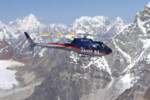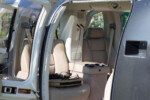How Fast Do Helicopter Blades Spin?
11 April 2022 | Updated on February 05, 2024
Helicopters are insanely complex machines consisting of thousands of different moving parts, including large narrow airfoils known as blades. Helicopter blades are located at the top of the cylindrical mast above the aircraft, and their length is between 40 to 60 feet long. Pilots can adjust the blade’s angle and pitch of rotation to make helicopters perform vertical take-off and landing, hover in mid-air, and fly the aircraft in any direction.
The blades are the most critical moving component in a helicopter because they generate aerodynamic lift force as they spin and resist aerodynamic drag when the aircraft is in flight.
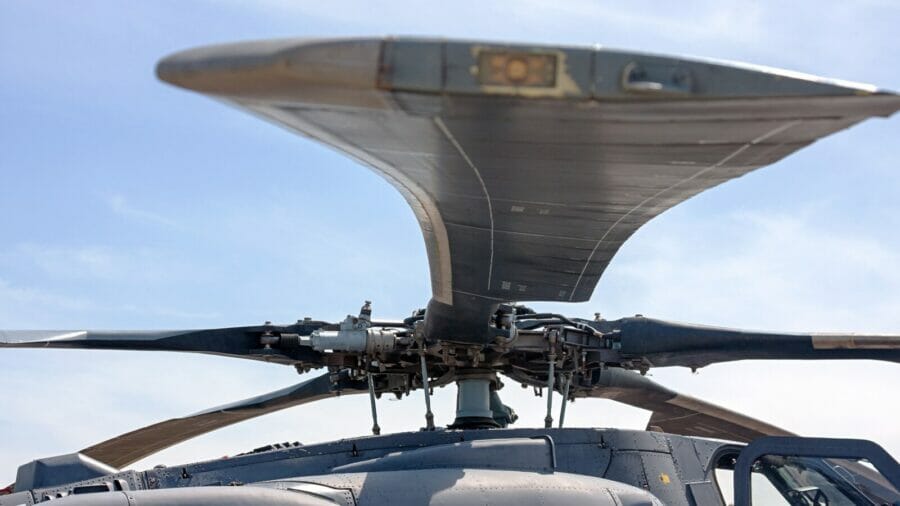

Helicopter blades are its main feature; they are fabricated from strong yet lightweight composite materials or metal alloys. The rotor blades on early helicopters were heavy wooden blades, but modern helicopters have more streamlined and efficient designs.
Rotor blades are responsible for a helicopter’s extraordinary practicality and incredible maneuvers. They allow helicopters to perform challenging missions, including search and rescue missions in dangerous and confined areas where fixed-wing airplanes are useless.
How Fast do Helicopter Blades Spin?
The blades on small helicopters spin between 400 and 500 revs per minute (RPM). Rotor blades on large helicopters spin at a slightly slower rate of around 230+ RPM. For example, the Chinook C-47 Army helicopter blades spin at 225 RPM, while a Robinson R22 Beta light helicopter blades spin at 530 RPM.
How do Helicopter Blades Work?
Helicopter blades work by pushing air over their airfoils to generate lift – just like an airplane’s wings. However, rotor blades on a helicopter also function as a propeller because they spin at very high speeds (depending on the length of the blades) to create a lower air pressure which rises above the airfoils resulting in the famed vertical ascent associated with helicopters.
Although spinning blades may get a helicopter airborne, getting the aircraft to hover, descend, or move in any direction requires considerable aerodynamic manipulation of rotor blades through the flight controls. Helicopter pilots control the machine through mechanical or electronic inputs to alter the blade’s angle of attack cyclically or collectively during rotation to pitch (tilt forwards and back), roll (move sideways), or decelerate, accelerate, ascend or descend.
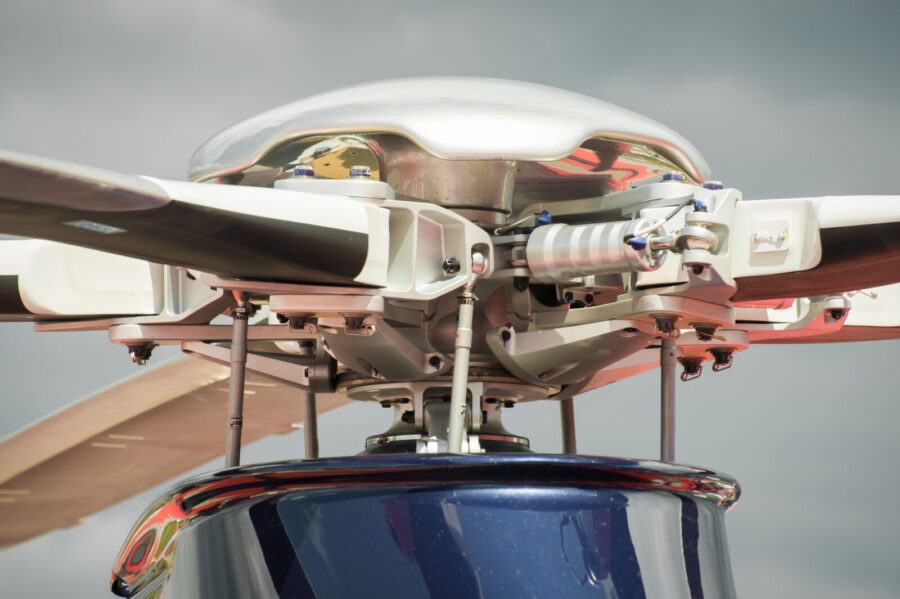

Here are a few bits of information about how helicopter blades work.
- Helicopter blades have a curved profile like airplane wings to generate lift.
- Helicopter blades are attached to the rotor hub by a feathering hinge.
- Helicopters adjust the blade’s pitch angles using connectors called vertical pitch links. The vertical pitch links move rotor blades upwards and down during rotation, making them swivel.
- The entire blade assembly, including the rotor hub and various connectors, sit on a rotor mast making the blades rotate.
Here’s a very interesting video showing the helicopter blades’ movement during flight:
How Many Blades Does a Helicopter Have?
Depending on the type of helicopter and its intended purpose, there can be anywhere from two to seven blades. More blades create more lift and thrust, but they also increase drag. As a result, helicopters that are designed for speed typically have fewer blades than those that are designed for lifting heavy loads.
For the same reason, airplane propellers also have a different number of propeller blades based on their performance and purpose.
The most common type of helicopter has two or three blades. Popular models like the Robinson R22/R44 and the Bell 206 all have two rotor blades. More performant helicopters models, like the Eurocopter 120 Colibri or McDonnell Douglas MD 900 usually have four blades.
Very heavy helicopters can have an even higher number of blades, as they are designed to lift heavy loads. The Mi-26, a Russian-made heavy transport helicopter, features eight main rotor blades and five tail rotor blades.
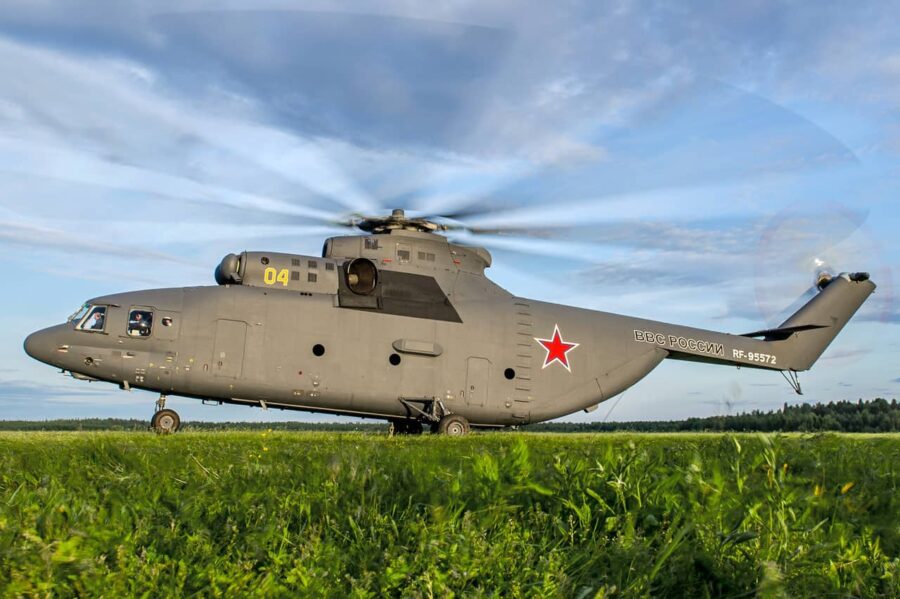

Does Helicopter Blades Spin Speed Change During Flight?
It is a common assumption that helicopter blades spin at faster or slower speeds during specific flight periods. Many people have experienced the visual illusion of seeing slow-spinning helicopter blades as the aircraft accelerates after take-off. The fact is rotor blades on a helicopter spin at relatively constant speeds at any point during flight, whether the helicopter is on the ground or in the air.
Aeronautic engineers designed helicopter blades to spin within a specific range of speeds, generally between ninety and one hundred and ten percent of the available rotary rates. Helicopter blades typically spin at +/- 90% of their full rotary speeds during normal flight operations.
To give a bit of context, rotor blades on the United States Army AH-64 Apache attack helicopter spin at a constant 242+ RPM during takeoff, hovering, cruising, combat engagement, descending, or ground taxiing.
And no. Helicopter blades do not rotate at supersonic speeds.
Types of Helicopter Blades
Not all helicopter blades are the same. Spinning blades on a helicopter have three distinct classifications based on how they are designed to swivel in tandem with the rotation of the rotor hub. They are rigid, semi-rigid, and fully articulated systems. Most helicopters use one of the three systems, but few may incorporate more than one type.
#1. Rigid rotor blade system.
A rigid blade system implies that the rotor blades are tightly secured to a rigid rotor hub by a feathering or pitch hinge, allowing helicopter blades to swivel as they spin. Helicopter blades in this system do not flag nor drag, but they can bend to absorb flapping and lead/lag forces.
#2. Semi-rigid rotor system.
Semi-rigid system consists of two blades (or more) firmly attached to a tilting rotor hub allowing the helicopter blades to flap simultaneously in opposite directions.
#3. Fully articulated rotor system.
They generally comprise two or more blades connected to the rotor hub by horizontal and vertical hinges, enabling the blades to move. Horizontal hinges in a fully articulated system permit helicopter blades to move up and down separately, while vertical hinges, also known as drag hinges, permit the blades to move front to back.
Rotor blades in the articulated rotor system can be feathered, allowing helicopter pilots to change the blade’s pitch angle to control the direction and thrust of the rotor disc.
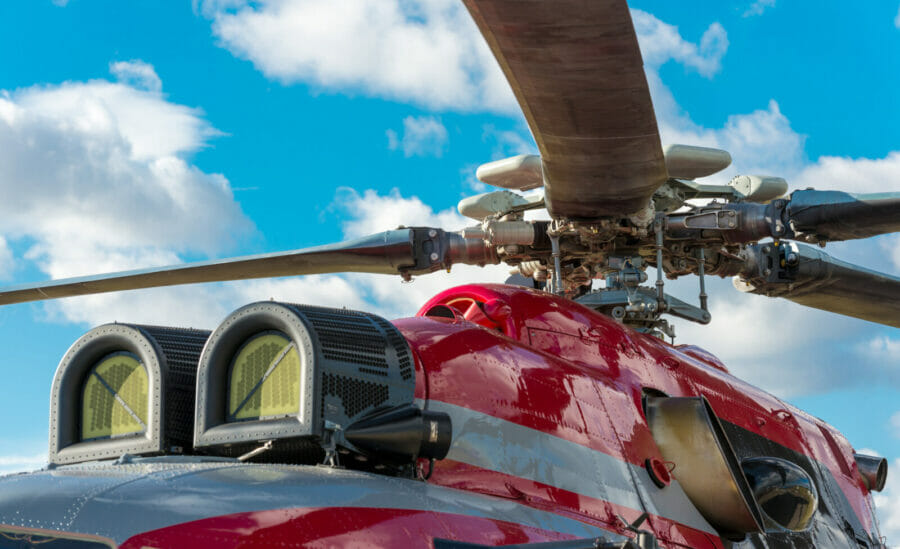

Does a Helicopter Blade Length Affect Performance?
How a helicopter performs is due mainly to the size of its blades. Ludwig Mies van der Rohe’s famous phrase “less is more” aptly describes the effect of short rotor blades on a helicopter’s in-flight performance.
Shorter helicopter blades provide a quicker and more responsive feel resulting in a nimble aircraft and allowing helicopter pilots to coax higher speeds from their machines. Additionally, helicopters fitted with short rotor blades have reduced drag but tend to be unstable during flight requiring higher levels of concentration to maneuver.
Large blades work best on helicopters designed for heavy lifting, e.g., transport or utility helicopters. They generate more lift than short blades at similar RPM spin rates while providing a more balanced and stable flight.
How Fast Does a Helicopter Tail Rotor Spin?
A helicopter tail rotor is a set of cute-looking blades located at the aircraft’s rear. It is designed to counteract torque reaction and hold the helicopter in a straight line. Since the tail rotor has a driveshaft connection to a helicopter’s main rotor, its spin rate is proportional to the main rotor blade’s spin speed.
Typically, a helicopter’s main rotor blades and tail rotor can have a 3:1 or 6:1 turn ratio, meaning the tail rotor may make three or six revolutions for each spin the main rotor blades make. To put things in context, if the main rotor blades are spinning at 300 RPM, the tail rotor is rotating at 1,800 RPM (6:1 ratio).
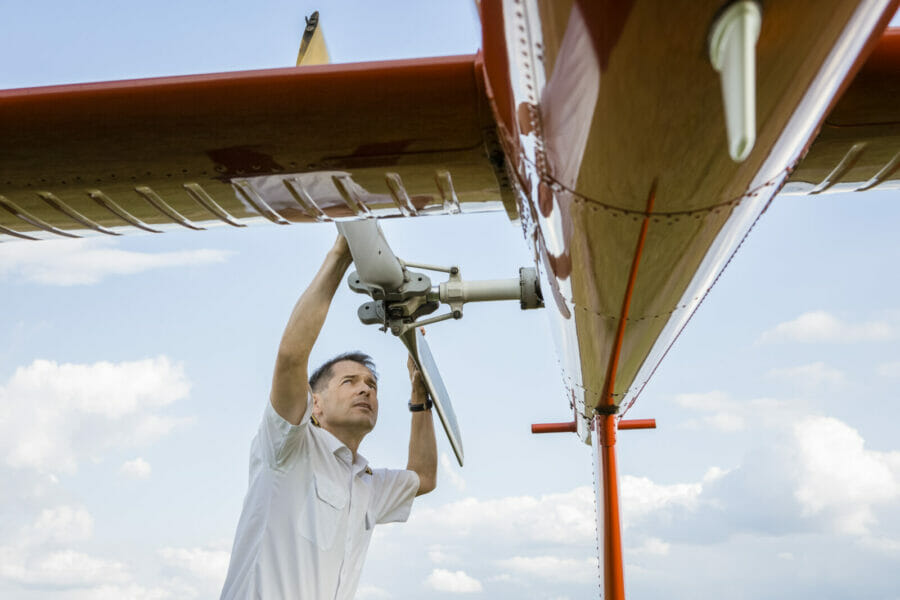

Can Helicopter Blades Kill People?
Helicopter blades can kill someone through the sheer blunt trauma force of their impact while rotating. This is also the reason you always need to keep your head down when exit or approaching a running helicopter. The blades pivot around a central point where the hub attaches to the main shaft, and the rotor disk can dip very close to the ground and much closer sometimes when the rotors are turning slow.
Helicopter blades are blunt airfoils that can do a lot of damage if they strike a human at high speeds. Here are a few general safety rules around a helicopter with spinning blades.
- You must remain outside the helicopter rotor blade area during takeoff and landing.
- Maintain eye contact with the pilot and remain within his point of view once the helicopter is on the ground.
- Do not go near the tail rotors.
- Do not approach a helicopter from the front or without receiving authorization from the pilot.
- Avoid walking uphill after exiting a helicopter on sloped terrain.
- Always enter and exit a helicopter through the side doors.
- Always ensure the helicopter doors are closed and latched.
- Always use your seatbelt while seated in a helicopter.


Are Helicopter Blades Strong?
Helicopter blades are built to be strong and practically indestructible because they hold the helicopter’s weight during flight. Early helicopter blades were made from wood prone to moisture and insect damage.
However, rotor blades on modern helicopters are highly complex parts made from lightweight but strong materials like fiberglass, carbon fiber, titanium, or steel alloys. Also, helicopter blades are designed with a honeycomb structure for extra strength and rigidity.
Conclusion
Modern helicopter blades are a world apart from the simple wooden blades on early helicopters. Yet they work in the same way to generate lift while allowing pilots to control helicopters during flight.
Rotor blades on modern helicopters spin at speeds unimaginable more than half a century ago. And as helicopters evolve into even more complex machines with increasing multi-role capabilities, environmental demands, and performance requirements. Rotor blade design and construction methods will change significantly.
And who knows if future rotor blades may have curved shapes or spin at supersonic speeds.


























